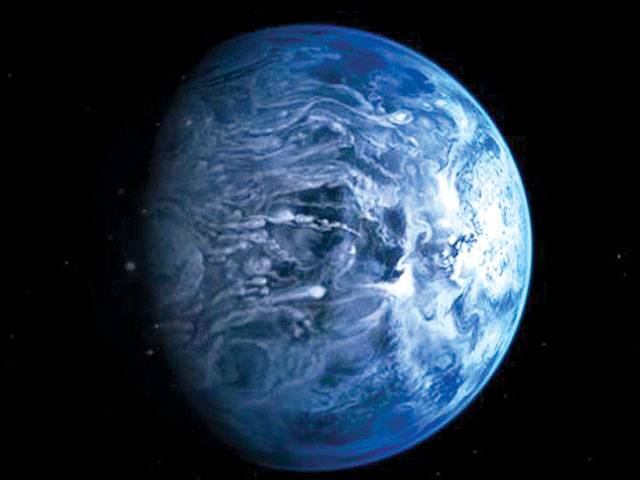WASHINTON, DC MO - The Hubble Space Telescope has determined the true colour of an alien planet for the first time - a dazzling blue.
Astronomers using the NASA/ESA telescope said that the planet, known as HD 189733b, is a deep cobalt blue, much like Earth. But that’s where the similarities end.
The planet is a huge gas giant orbiting very close to its host star and its atmosphere is scorching, with a temperature of over 1,000 degrees Celsius.
t also rains glass - sideways - in howling 7,000 kilometre-per-hour winds.
At a distance of 63 light-years from us, this turbulent alien world is one of the nearest exoplanets to Earth that can be seen crossing the face of its star.
It has been intensively studied by Hubble and other telescopes and its atmosphere has been found to be dramatically changeable and exotic, with hazes and violent flares. Now, it is the subject of an important first - the first measurement of an alien planet’s visible colour.
The planet’s azure blue colour does not come from the reflection of a tropical ocean, but is due to a hazy, turbulent atmosphere thought to be laced with silicate particles, which scatter blue light.
Earlier observations using different methods have reported evidence for scattering of blue light on the planet, but these most recent Hubble observations give robust confirming evidence, according to the scientists. The planet’s colour will be discussed in detail in a paper in Astrophysical Journal Letters. Frederic Pont, of the University of Exeter, and leader of the Hubble observing programme and paper author, said: ‘This planet has been studied well in the past, both by ourselves and other teams.’
Saturday, April 20, 2024
Another alien blue planet discovered

Pak economy improving, funds will be provided on request: IMF
9:57 PM | April 19, 2024
Minister advocates for IT growth with public-private collaboration
9:57 PM | April 19, 2024
Judges' letter: IHC seeks suggestions from all judges
9:55 PM | April 19, 2024
Formula 1 returns to China for Round 5
9:05 PM | April 19, 2024
Germany head coach Julian Nagelsmann extends contract till 2026 World Cup
9:00 PM | April 19, 2024
A Tense Neighbourhood
April 19, 2024
Dubai Underwater
April 19, 2024
X Debate Continues
April 19, 2024
Hepatitis Challenge
April 18, 2024
IMF Predictions
April 18, 2024
Kite tragedy
April 19, 2024
Discipline dilemma
April 19, 2024
Urgent plea
April 19, 2024
Justice denied
April 18, 2024
AI dilemmas unveiled
April 18, 2024
ePaper - Nawaiwaqt
Advertisement
Nawaiwaqt Group | Copyright © 2024





